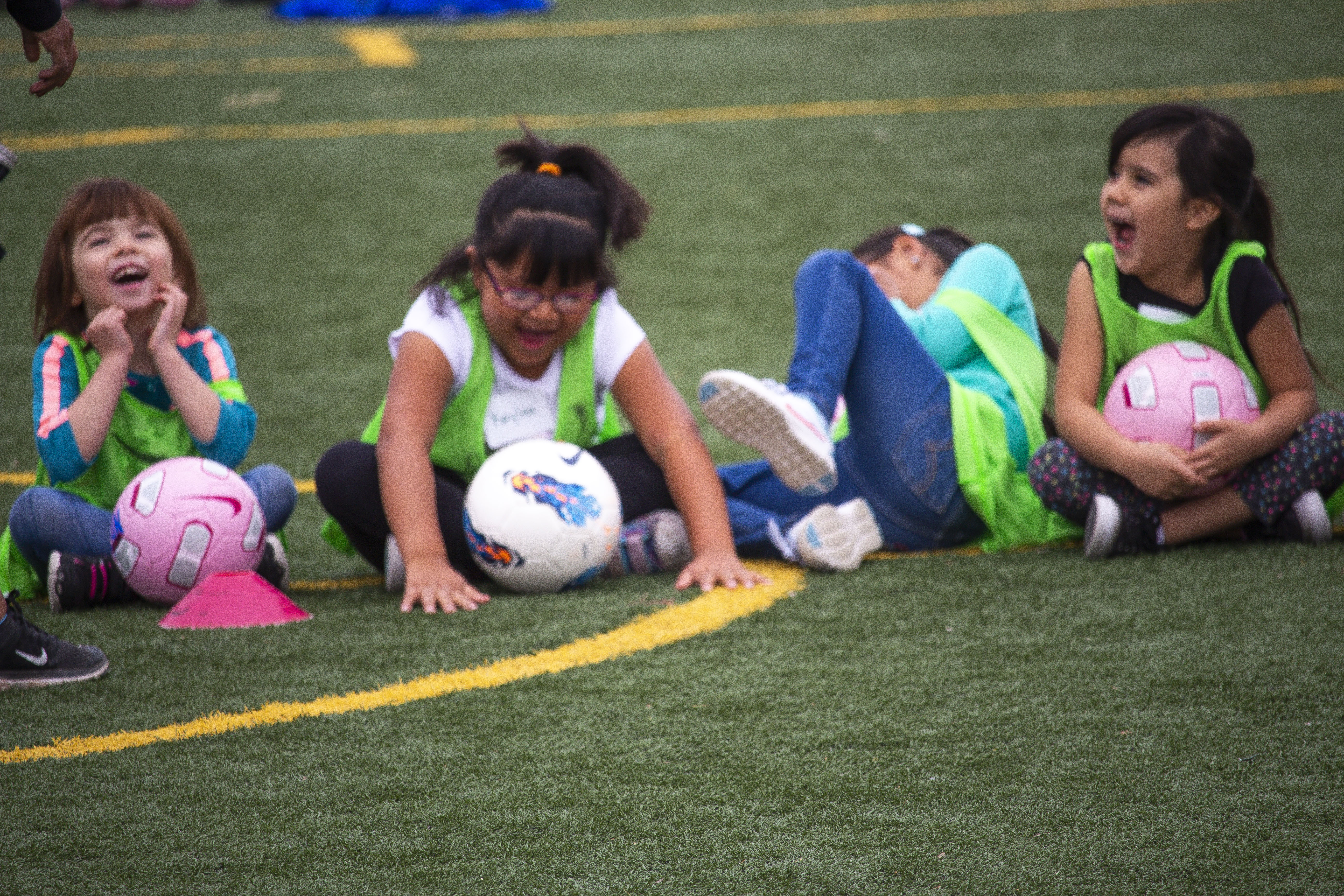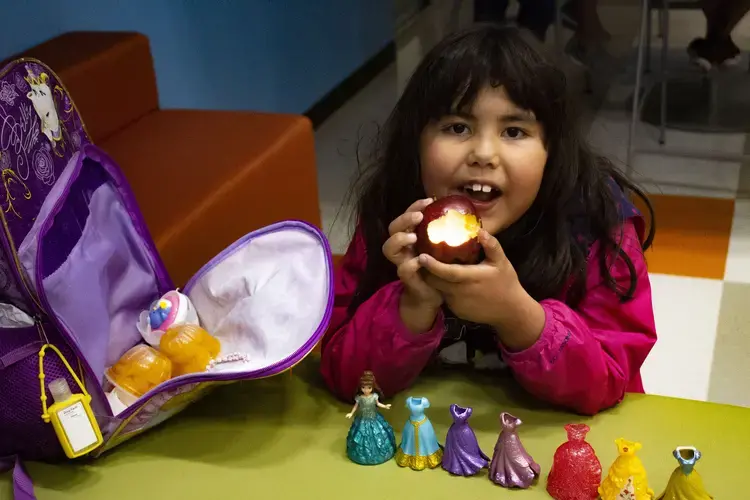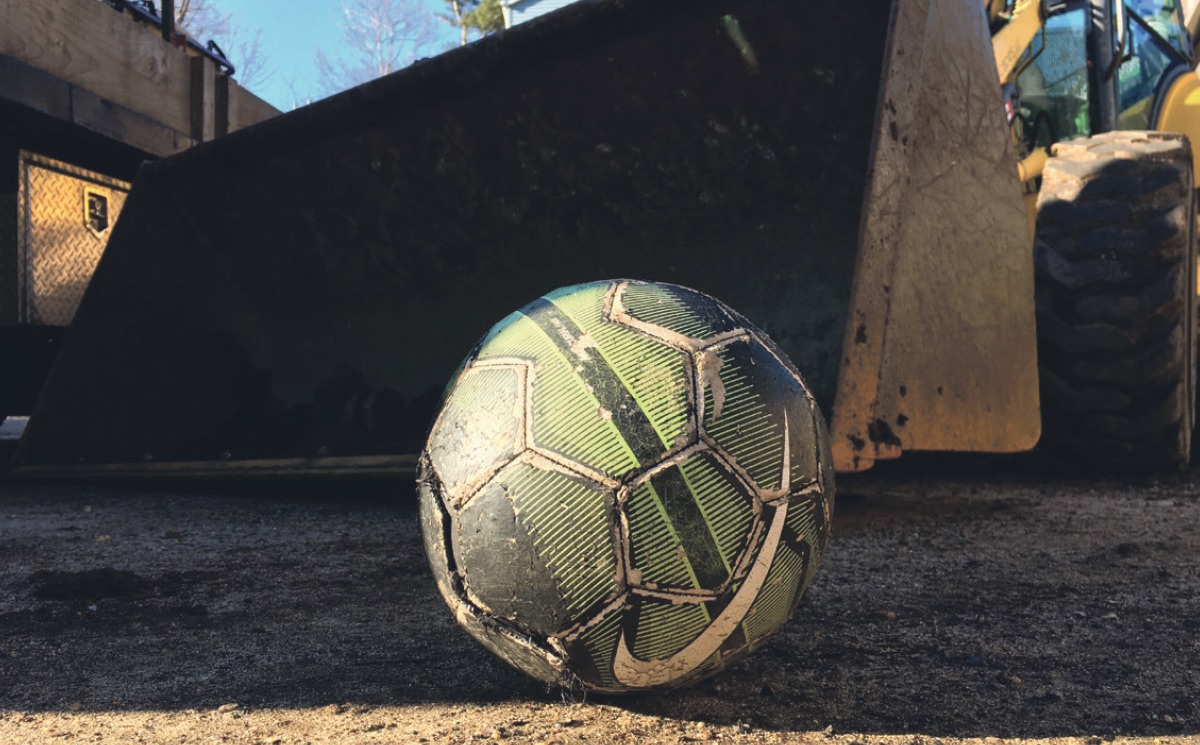
While Native Americans are combating epidemic rates of childhood obesity and Type 2 diabetes, collaborative community efforts are making headway in a New Mexico school district that may become a model for others.
“An epidemiology study stated that 40 percent of Native kids ages five to eight are overweight or obese, and a third are at risk of cardiovascular diseases and low cholesterol,” says Dr. Alexandra Adams, the director for the Center for American Indian and Rural Health Equity at Montana University and the principal investigator of the Healthy Children, Strong Families (HCSF) research at the University of New Mexico’s Center for Native Health’s Pediatric Obesity Prevention Research. “The study stated that high rates of diabetic children learn unhealthy habits early on.”
HCSF has implemented a randomized controlled trial with two initiatives: The Wellness Journey provides nutrition and physical activity information in 13 lessons, while the Safety Journey focuses on a controlled study involving the reduction of sweets consumption and screen time, as well as increasing physical activity and the intake of fruits and vegetables in Native children ages two to five-years-old. This study also includes the children’s primary care-givers, and a newsletter teaches important safety lessons.
“Each lesson came with a tool kit which was sent to the homes. This tool kit included tangible things to do, including “How to’s” and children’s books,” Adams said. “The Safety journey included water safety, choking, and high accident risk reduction.”
According to Adams, children spent more time outside, and the parents were more engaged. Most of the participants remained in the study throughout the two years, and only 16 percent of families left the study due to life situations, such as parents being incarcerated, or kids being taken away from their parents.

“The study rendered positive results by decreasing BMI [body mass index] in children as well as positive behavior in both studies,” Adams said. “The national trial results look positive but have not been published yet.”
HSCF was designed with the community in mind.
“The design was based on the Native community value for inclusiveness,” Adams said. “Inclusivity is good for the community.”
Other organizations strive to be inclusive in their fight against the diabetes epidemic. The Notah Begay III Foundation (NBIII), a national organization that works with 12,000 Native youth, and the community-based Santa Ana Wellness Center are two such examples.
“We believe in both walking the walk, doing the work, being out in the community and engaging young people in physical activity and healthy nutrition efforts and then supporting others,” Justin Huenemann, President and CEO at NBIII Foundation, said. “We have a national grant-making program, so not only do we want to do it in our own backyard, but we want to encourage others and support others out there doing it. It’s a combination of supporting and doing.”
As part of walking the walk, the NBIII foundation, along with local community organizations, plans year-long health and wellness curriculums, conducts pediatric obesity research, and cultivates health and fitness events. One of the major events is NB3Fit week, a national week of Native health and fitness events, which includes rock climbing, cross country and soccer programs for their Pueblos as well as surrounding communities.
About 400 kindergartners through second graders participated in a day-long soccer clinic at W.D Carroll Elementary School in Bernalillo, New Mexico, located near the Sandia and Santa Ana Pueblos. The kids at Carroll Elementary are mostly Native American. As a Title 7 school, 100 percent of the kids are eligible for free and reduced lunch.

Prior to the clinic, Huenemann gathered his staff, volunteers, and school personnel and, with tears in his eyes, told them to give it their all. He explained that this was more than just a day to get out and play and that these kids not only needed to learn and be active but that they also needed emotional support.
“If they want to hug you, hug them, give them high fives,” Huenemann said. “Share that love with these kids, you don’t know what goes on in their lives, soak it in today, and have fun.”

During the clinic students were broken up into two group sessions—one consisted of leadership games and activities and the other session, run by NBIII coaches and soccer players from SOL, a professional soccer team in New Mexico, focused on soccer techniques and mechanics. Both sessions used healthy foods and vegetable names in instructions and activities as a springboard for learning retention.
The children were attentive and energetic, and they enjoyed themselves. This session was their only school-related physical activity for the week as Carroll Elementary students only have physical education once a week.
“I like when we get these chances. They’re a good thing, it’s a nice break,” Cynthia Moya, a second grade teacher at Carroll Elementary said. “A majority of the kids don’t get to participate in sports after school—we don’t have afterschool programs.”
“This is something the kids really needed,” Moya said. “In our state lawmakers are taking away more and more physical education.” This is true for older kids as well: Sixth and eighth graders are not required to take any physical education classes; eighth graders must take P.E only if they did not pass the class in seventh grade.

The Santa Ana Wellness Center
“Not taking P.E is kind of boring—just sitting in classes,” Jaunica Sandoval, 13, from the Tamaya Pueblo, said. “The only place we get P.E is usually after school [at the Wellness Center].”
Sandoval attends the Santa Ana Wellness Center in the Pueblo of Santa Ana, near Bernalillo, every day after school. There she participates in volleyball, runs cross-country, and swims. “I feel like we need more P.E in school. I get antsy sometimes during school and then I can’t concentrate because I haven’t been able to have recess or run or anything,” Sandoval says. “We have recess but only like five minutes of free time for five or six hours of school.”The Santa Ana Wellness Center after-school programs also provide nutrition education and healthy snacks to kids.
“We do cooking classes with kids, cross country. We try to expose kids—lots of them need after-school support in a physical-activity-kind-of-way so we try to make the most of after-school time, trying to keep active, outside just running around,” Alina Potrzebowski, Youth Wellness and Recreation Manager at the Santa Ana Wellness Center, said. “We value free play. Giving them the room to be creative and do what they want to do is a really important aspect. We expose kids to different ways to be active, doing different things in the spirit of fun. There's no standing in line.”
The Wellness Center programs focus on making health and physical education fun and engaging.
“Exercising because you like to—I think that's really one of the things that’s important in combating [diabetes], as well as role-modeling healthy eating and not serving sugar sweetened beverages,” said Potrzebowski. “We also do nutrition education, which includes a lot of food tastings, trying different kinds of fruits and veggies and not drinking sugary drinks.”

Potrzebowski constructs health curriculums for the program by borrowing from already existing Native American health curriculums.
“We just kind of take what we think is applicable to us, we pull from here and there, and we use curriculums that have been tested,” Potrzebowski said. “It's helpful to have those things in place to take from when we need.”
At the Center, not only are the kids learning to better their health through proper eating and physical activity, but they are also encouraged to pass that knowledge on to their peers and become soldiers in their own battle against this epidemic.
“We see wellness as a bigger overall thing,” Potrzebowski said. “We are working on getting a teen youth group in place so that they can take the lead, giving back to the community, and accomplishing their own [health] goals.”
Through these programs and curriculums, the staff hopes to inspire children by instilling learning retention that makes sense through action and participation.
“If I say things like 'run harder' or 'eat your carrots' then it doesn’t quite have the same impact,” Huenemann said. “Ultimately if you inspire a kid to do something—and I really do believe that if they become inspired for something then they start to recognize ‘If I'm going to excel in this or do better’ then things like eating well, exercise, taking care of myself, perseverance—all these values that we teach in our youth development curriculum—start to make sense.”
As a community, Native Americans exposed to the Wellness Center programs are coming together to educate their children on living better healthier, active lives starting at a younger age.
“That’s the big word—prevention, we really believe in thinking upriver. Working with kids early on at a consistent level is the age where you really want to plant seeds around taking care of yourselves—whether that’s your mind, your body, your spirit,” Huenemann said. “They may not get that teaching every day in their own home environment, in their community environment, or maybe even in their classroom so part of this is just starting to plant some seeds around enjoying things that are fun like running around, playing some soccer.”

Education Resource
Meet The Journalists: Allison Herrera, Josephine Holtzman, Isaac Kestenbaum
Journalists Allison Herrera (Salinan), Josephine Holtzman, and Isaac Kestenbaum talk about their...










